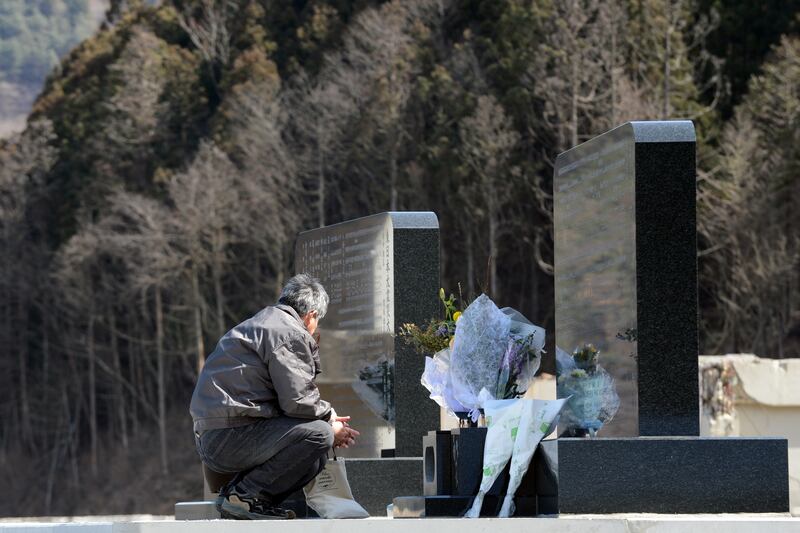It's been two years since the March 11th earthquake and the tsunami that devastated Japan, and cost over 19,000 lives—but little has changed or improved in the tsunami-stricken city of Ishinomaki, Miyagi Prefecture.

Waves over 10 meters (33 ft) high killed more than 3,000 people and completely destroyed 20,000 homes in the city. The Mayor of Ishinomaki in comments to the press last week lamented, “The majority of our citizens are still forced to live in temporary dwellings.” National government money earmarked to be spent rebuilding the area was wasted on things like funding whaling and promoting tourism for Tokyo. The mainstream Japanese press has failed to call attention to disaster stricken areas outside of the nuclear contaminated Fukushima, and so some frustrated local citizens are now putting their own news service on-line to tell the world and Japan what's really happening.
Motokazu Arakawa, 49, is an industrial gas supplier who survived the tsunami, and is trying to rebuild his business in Ishinomaki. Together with three colleagues, he decided to open a news organization, Rolling Press, aiming to spread and share information about the situation in Ishinomaki to people overseas—in English.
The Japanese mainstream media, and therefore foreign media have been neglecting coverage of the recovery efforts in Ishinomaki and other tsunami disaster zones. Arakawa and crew feel that it’s up to them to show what's going wrong. Those who remain in Ishinomaki City are often unemployed and still homeless. Some citizens kill their times in local Japanese gambling shops, called pachinko parlors, or drinking heavily. Mr. Arakawa continues to try and negotiate past the Japanese government red-tape that stops him from rebuilding his business, but he and his friends have decided to put their down time to good use.
Arakawa used to run the factory established by his grandfather before the tsunami swept it away. His factory, which was providing gas supplies to other businesses close to the coastline, was located 800 meters from Ishinomaki’s main port.
Two years have passed since the tsunami hit his town. But little has changed. His factory is still in limbo. He wants to start the reconstruction, but he says the Japanese government will only pay him back 75% of the costs after he finishes rebuilding his factory. “It’s a cart before the horse kind of system. It took until last December to finish all the paper work and fill the requirements to receive the green light to even get things going.” He said.
He has no plans to leave Ishinomaki because he loves the town and all his customers are there. However, the Japanese government is not making his work easy.
“All the papers and the contracts for the factory disappeared in the floods, that’s why I have to do all the paperwork again, which is taking ages to complete.” The total cost for rebuilding the office, the warehouse and the factory will be about 2 million dollars.
Mr. Arawakawa is slightly dumbfounded by the lack of progress in rebuilding the city and the Tohoku (Northern Japan) region.
“We are very angry that our government has spent funding marked for reconstruction on the whaling industry, promoting the Sky Tree, perhaps even on a bid to host the next Olympic Games in Tokyo. Some towns are recovering quickly but not here. The people of Ishinomaki tend to complain in their hearts but we hesitate to voice our frustration. This is the nature of Tohoku people. We are also quick to criticize the local government who are doing their best, without much needed help from the central government.”
The Reconstruction Agency of Japan, which is supposed to coordinate the rebuilding and revitalization of Tohoku, has acknowledged huge delays in the reconstruction efforts. The current Reconstruction Minister, Mr. Takumi Nemoto, in a press conference last year, admitted to misuse of funds during the previous administration and said, “Reconstruction funds should only be used for reconstruction. We will strive to obtain those funds and speed up the process. I have visited disaster areas and I can palpably feel how far behind we are in restoration.”
Mr. Nemoto, also said this month, “After two years of steady progress, the government of Japan is firmly committed to further accelerating its reconstruction efforts. Priority issues including rebuilding living environments that are resilient and able to withstand future natural disasters, the restoration of livelihoods in disaster areas…regional economic revitalization will be significantly expedited.”
Arakawa who has been told these things for two years is skeptical. “Steady progress? We mostly just see steady delays. It would be a miracle if the Japanese government got their act together and really sped up the recovery and reconstruction,” Arakawa explains.
Arakawa is not a stranger to miracles. He was several inches away from drowning to death on 3/11 and a second of hesitation could have cost him his life. When the tsunami hit, Arakawa tried to run outside but quickly decided to remain under the roof of his factory, as the water struck violently. “I survived because I grabbed a pillar in my factory, and held onto it until the water brought my body up to the roof, 3.5 meters off the ground. If the waters had risen twenty more centimeters, I would have drowned. It came all the way up to my chin.”
All his staff working in his factory survived. But one month after the tsunami, two people were found dead in the factory garden.
His factory is still in ruins but much debris has been cleared.
“After the disaster, many volunteers came to help us clear the debris, especially foreigners who came from abroad, and foreigners who were already in Japan. I feel very grateful to the international community.”
In April 2012, Arakawa was invited by the American Chamber of Commerce in Japan to give a talk in Tokyo about the reconstruction efforts in his city. It was during that talk that he began to think about putting together a news agency. As Mr. Arakawa was waiting for things to improve, he decided together with three colleagues to launch Rolling Press, to give hope for the revival of Ishinomaki. He was also moved to action after many foreigners had told him that they don’t hear any news from Ishinomaki, one year after the disaster. Many foreign volunteers who helped clear the debris after the disaster wrote him letters requesting more news from Ishinomaki.
“As I was individually responding to each of the volunteers, I thought about creating a news organization on my own to spread the information about the shops which managed to restart their business, about what’s good in the city, about what’s really happening.”
He feels there is a real need for alternative news coverage in Japan.
“The nuclear meltdown in Fukushima caught the attention of the world and the Japanese media, but the disaster didn’t just effect Fukushima. The Japanese press has forgotten us but we need the world to remember our town and us if we are going to recover. We also need to people to know the truth about the endemic problems in the rebuilding efforts of the Japanese government.”
Rolling Press currently works with eight volunteer translators to help spread the news and has put out a PDF version of the magazine on a trial run.
The Vol. 01 edition, published earlier this year, has an article about volunteer tour guides for people visiting the area, a piece on the successful reopening of the Ishinomori Manga Museum, and a feature on a local restaurants that has just reopened. Rolling Press is now planning to open its webpage next month and to spread their area of coverage. “The online edition, which will be launched soon will be free, but we may request some donations. All donations go to help rebuild the town and put out the news.” Arakawa said.
The name, Rolling Press was inspired by a loose translation of the town’s name: “Ishi” is stone and “Maki” means to roll, and Mr. Arakawa notes, “Just as the large stones in the Kitakami river will roll under the flow of the current, we hope to set the hearts of people in motion as well. By the way, Ishinomaki, literally means ‘rocks rolling’ and frankly I think this town rocks,” he says, cheerfully.
Rolling Press is not yet on-line but the crew can be reached at rollingpress311@gmail.com. Subscriptions are available for the PDF version and proceeds go to support local reconstruction.







